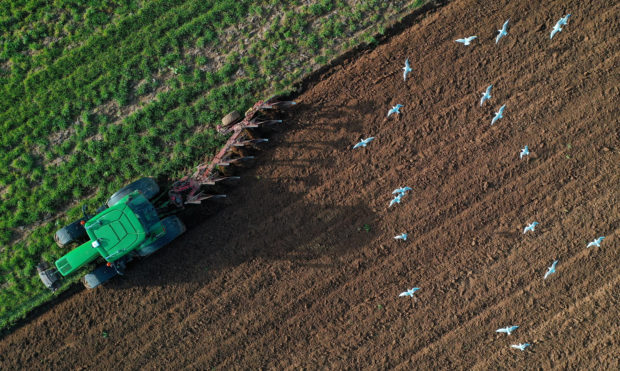
A farmer drives his tractor to prepare his field to sow wheat in Havrincourt, France, October 26, 2022. REUTERS/Pascal Rossignol/File hpoto
ROME – The United Nations food agency’s world price index edged slightly lower in October, the seventh consecutive monthly fall and 14.9 percent down from its all-time high recorded in March.
The Food and Agriculture Organization (FAO) said on Friday that its price index, which tracks the most globally traded food commodities, averaged 135.9 points last month versus a revised 136.0 for September.
The September figure was previously put at 136.3.
The index has fallen from a record of 159.7 in March, but remained 2 percent higher than a year earlier.
While prices dipped overall, the cereal index rose 3 percent , with wheat up 3.2 percent , mostly reflecting uncertainties related to exports from Ukraine and also a downward revision for U.S. supplies. International rice prices increased 1 percent .
By contrast, FAO’s vegetable oil index fell 1.6 percent in October and was down nearly 20 percent on its year-earlier level. Rising international quotations for sunflower seed oil were more than offset by lower world prices of palm, soy and rapeseed oils.
Dairy prices fell 1.7 percent , meat was down 1.4 percent and sugar eased 0.6 percent .
In separate cereal supply and demand estimates, FAO lowered its forecast for global cereal production in 2022 to 2.764 billion tonnes from a previous 2.768 billion tonnes.
That is 1.8 percent below the estimated output for 2021.
“The month-on-month downward revision almost entirely concerns the wheat crop in the United States, reflecting downgrades to yields and harvested area,” FAO said.
World cereal use in 2022/23 is expected to surpass production at 2.778 billion tons, leading to a projected 2 percent fall in global stocks compared with 2021/22 to 841 million tons.
That would represent a stocks-to-use ratio of 29.4 percent , down from 30.9 percent in 2021/22 but still relatively high historically, FAO said. World trade in cereals in 2022/23 was predicted to register a 2.2 percent contraction to 469 million ton.